viz blog
A Short-Lived Celebration
Keeping tabs on 175 Korn Ferry Tour graduates.
CREATED — 2022-10-16 | DATA UPDATED — 2022-10-14
In a sport increasingly polluted by money, the Korn Ferry Tour season finale—despite its measly $850,000 purse—has provided several must-see moments over the years.
After an unforgiving season, the top 25 players on the points list are presented PGA Tour membership cards in front of their friends and family.
While each player has his own story, the 25 graduates are momentarily united in taking one step closer to their goal of becoming one of the best—or at least a regular—on the PGA Tour.
The harsh reality is they won’t all make it.
We visualized data since 2014 on the respective journeys that 175 players took leading up to, and following, their Korn Ferry Tour graduation. Each season within a player's journey is assigned a tour based on where they played the majority of their rounds. Players with few rounds in a season (less than 10) are assigned Unknown—it is likely they were on mini tours, injured, or retired. Players who qualify for the TOUR Championship—by finishing in the top 30 in the FedExCup Playoffs—are assigned TOUR Champ Q to separate the high-performing graduates from average PGA Tour members. Each row in the table shows the distribution of tours in that year relative to graduation (e.g. row 1, column 2 tells us that 18.9% of players were amateurs 2 years prior to graduation).
The harsh reality is they won’t all make it.
We visualized data since 2014 on the respective journeys that 175 players took leading up to, and following, their Korn Ferry Tour graduation. Each season within a player's journey is assigned a tour based on where they played the majority of their rounds. Players with few rounds in a season (less than 10) are assigned Unknown—it is likely they were on mini tours, injured, or retired. Players who qualify for the TOUR Championship—by finishing in the top 30 in the FedExCup Playoffs—are assigned TOUR Champ Q to separate the high-performing graduates from average PGA Tour members. Each row in the table shows the distribution of tours in that year relative to graduation (e.g. row 1, column 2 tells us that 18.9% of players were amateurs 2 years prior to graduation).
Hover on circles to isolate player paths.
Highlight Graduate
9.1%
18.9%
2.9%
16.0%
38.9%
13.7%
0.6%
5.1%
12.0%
4.6%
14.9%
46.9%
16.6%
0%
0%
0%
0%
0%
100%
0%
0%
0%
0%
0%
0%
0%
96.0%
4.0%
4.7%
0%
0%
1.3%
35.3%
54.7%
4.0%
8.8%
0%
0.8%
0.8%
26.4%
56.0%
7.2%
10.0%
0%
1.0%
0%
28.0%
56.0%
5.0%
13.3%
0%
5.3%
0%
24.0%
50.7%
6.7%
Unfortunately, PGA Tour membership ends too soon for many graduates, as 41.3% (roughly 10 in 25) of
the graduating class ends up back on the Korn Ferry Tour—or worse—after an
unsuccessful post-grad campaign.
In the years that follow this first season, the percentage of graduates on the PGA Tour never rises above 63% (16 in 25).
It’s not all negative though. Four percent (1 in 25) qualified for the TOUR Championship immediately after graduation, and the share making it to East Lake remains relatively high 5 years on. This path—paved by the likes of Justin Thomas, Sungjae Im, Will Zalatoris and Scottie Scheffler—shows young collegiate players that it’s okay to spend time in the PGA Tour development system. They can’t all be Jordan Spieth.
Three years post-graduation sees PGA Tour membership max out at 63%, with 7.2% (2 in 25) even qualifying for the TOUR Championship. This small increase in membership and success is due to players rebounding back from the Korn Ferry Tour after their initial failure to keep a Tour card, and the more talented graduates—who are typically younger—finding their swagger among the top ranks of the PGA Tour.
Max Homa probably had the most interesting journey among the 175, at least on paper. Homa twice graduated from the Korn Ferry Tour (2014, 2016)—and even had an additional “graduation” via the 2018 Korn Ferry Tour Finals—before finding his place on the PGA Tour and ultimately qualifying for the 2022 TOUR Championship.
Along with the relief, hope, and expectations that come with gaining PGA Tour membership, these are the realities facing the 25 Korn Ferry Tour graduates each year. Perhaps in an effort to tamper expectations we should let them know that—on average—three of you will have quit professional golf in 5 years.
It’s not all negative though. Four percent (1 in 25) qualified for the TOUR Championship immediately after graduation, and the share making it to East Lake remains relatively high 5 years on. This path—paved by the likes of Justin Thomas, Sungjae Im, Will Zalatoris and Scottie Scheffler—shows young collegiate players that it’s okay to spend time in the PGA Tour development system. They can’t all be Jordan Spieth.
Three years post-graduation sees PGA Tour membership max out at 63%, with 7.2% (2 in 25) even qualifying for the TOUR Championship. This small increase in membership and success is due to players rebounding back from the Korn Ferry Tour after their initial failure to keep a Tour card, and the more talented graduates—who are typically younger—finding their swagger among the top ranks of the PGA Tour.
Max Homa probably had the most interesting journey among the 175, at least on paper. Homa twice graduated from the Korn Ferry Tour (2014, 2016)—and even had an additional “graduation” via the 2018 Korn Ferry Tour Finals—before finding his place on the PGA Tour and ultimately qualifying for the 2022 TOUR Championship.
Along with the relief, hope, and expectations that come with gaining PGA Tour membership, these are the realities facing the 25 Korn Ferry Tour graduates each year. Perhaps in an effort to tamper expectations we should let them know that—on average—three of you will have quit professional golf in 5 years.

 Data Visualization Gallery
Data Visualization Gallery
Bomber's Paradise
2021-12-23

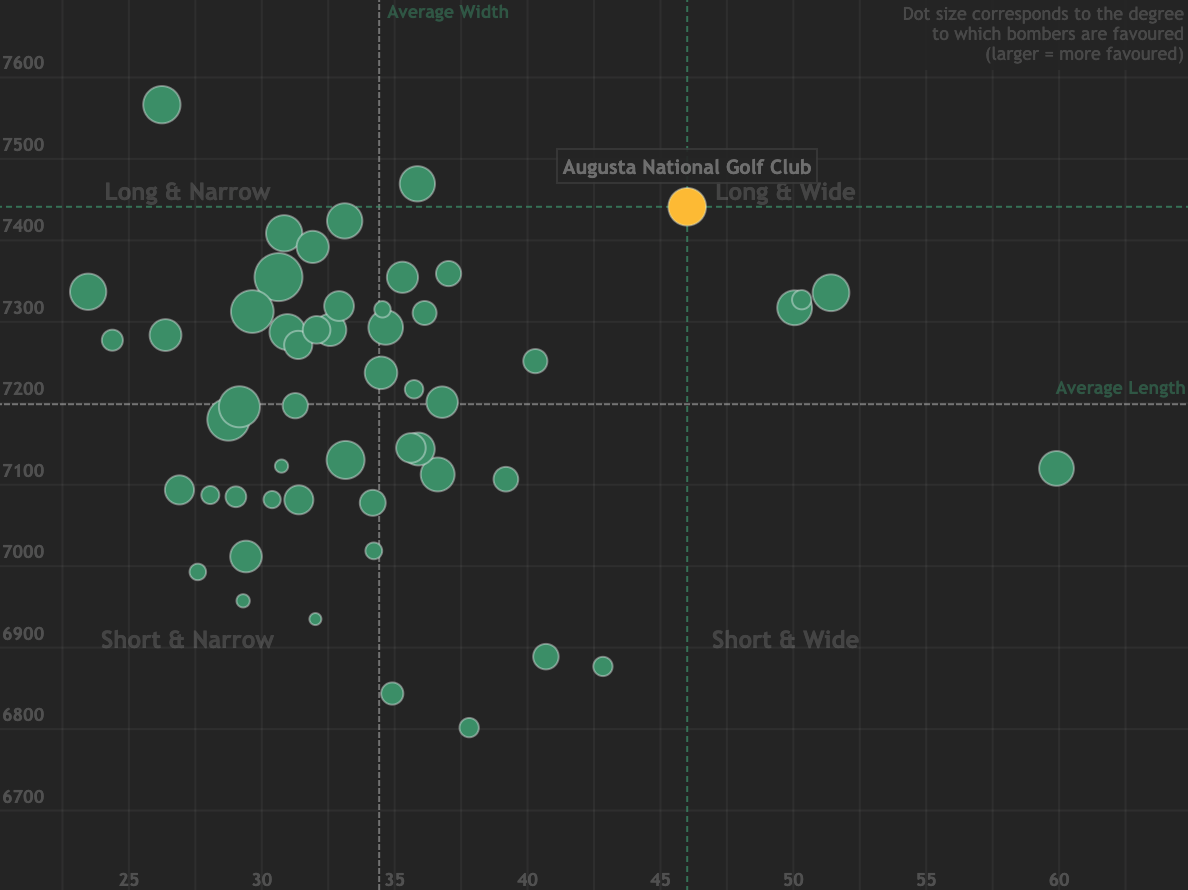
Visualizing the relationship between course length, fairway width, and favourability towards bombers.
Golf Gods Giveth..
2021-12-30

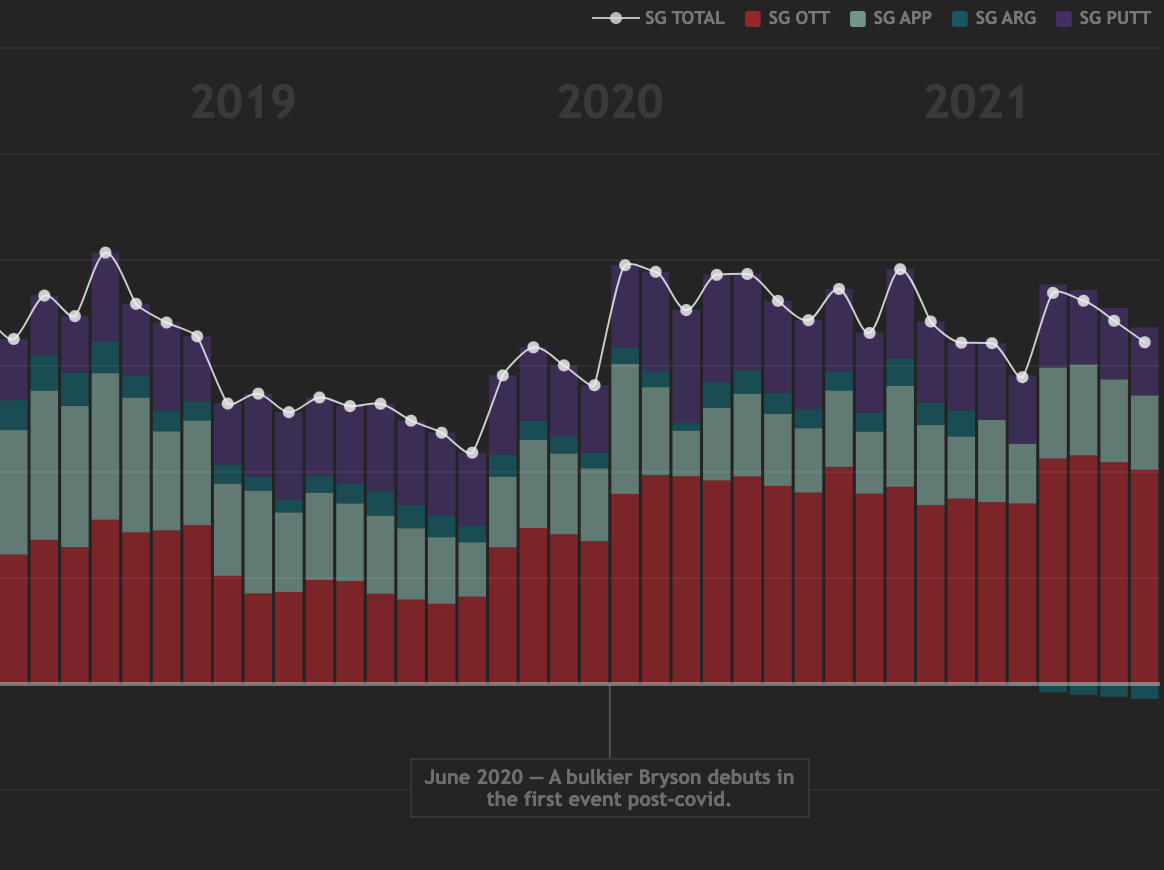
A detailed look at how Bryson DeChambeau's skill profile shifted after chasing, and finding, club head speed.
Peaking for Augusta
2022-04-04
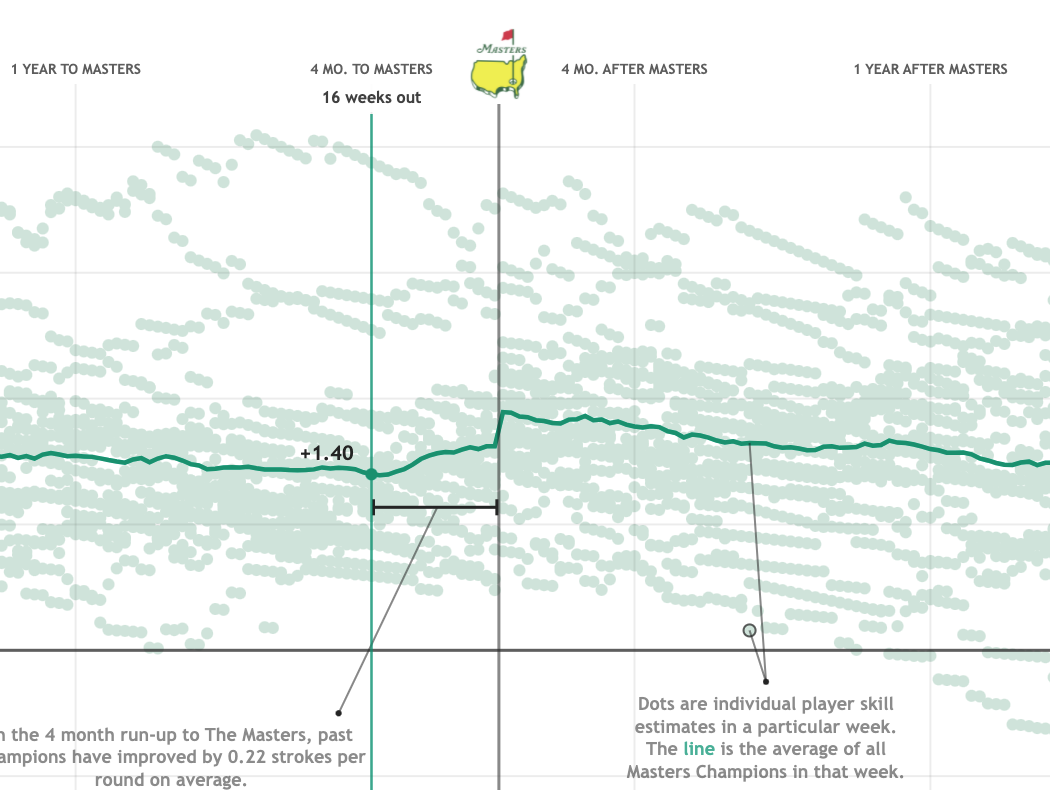

Who is walking the path of a Masters Champion?
Major Performers
2022-06-15

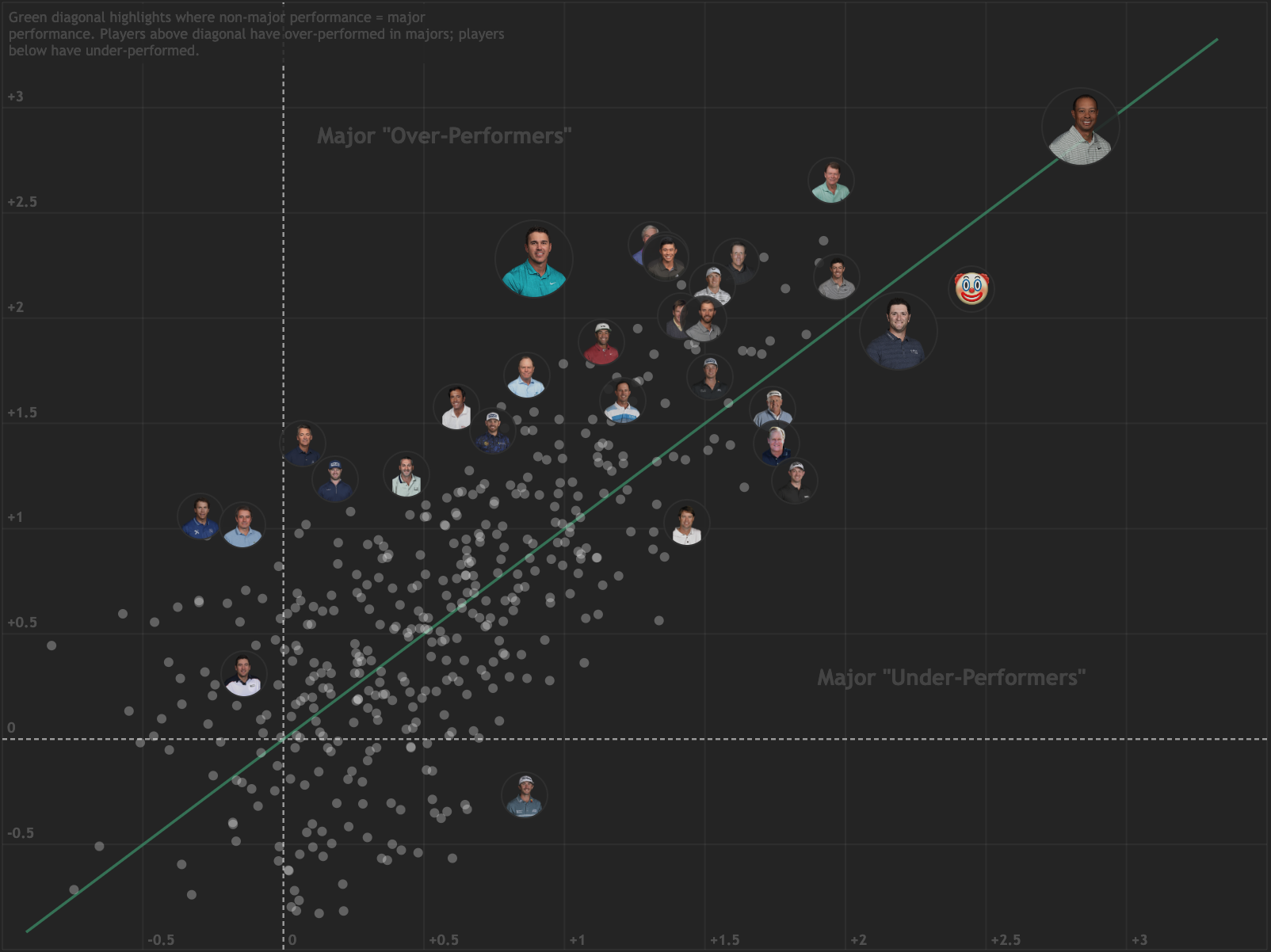
Who steps up their game most at Major Championships?
Performance Map
2022-07-12

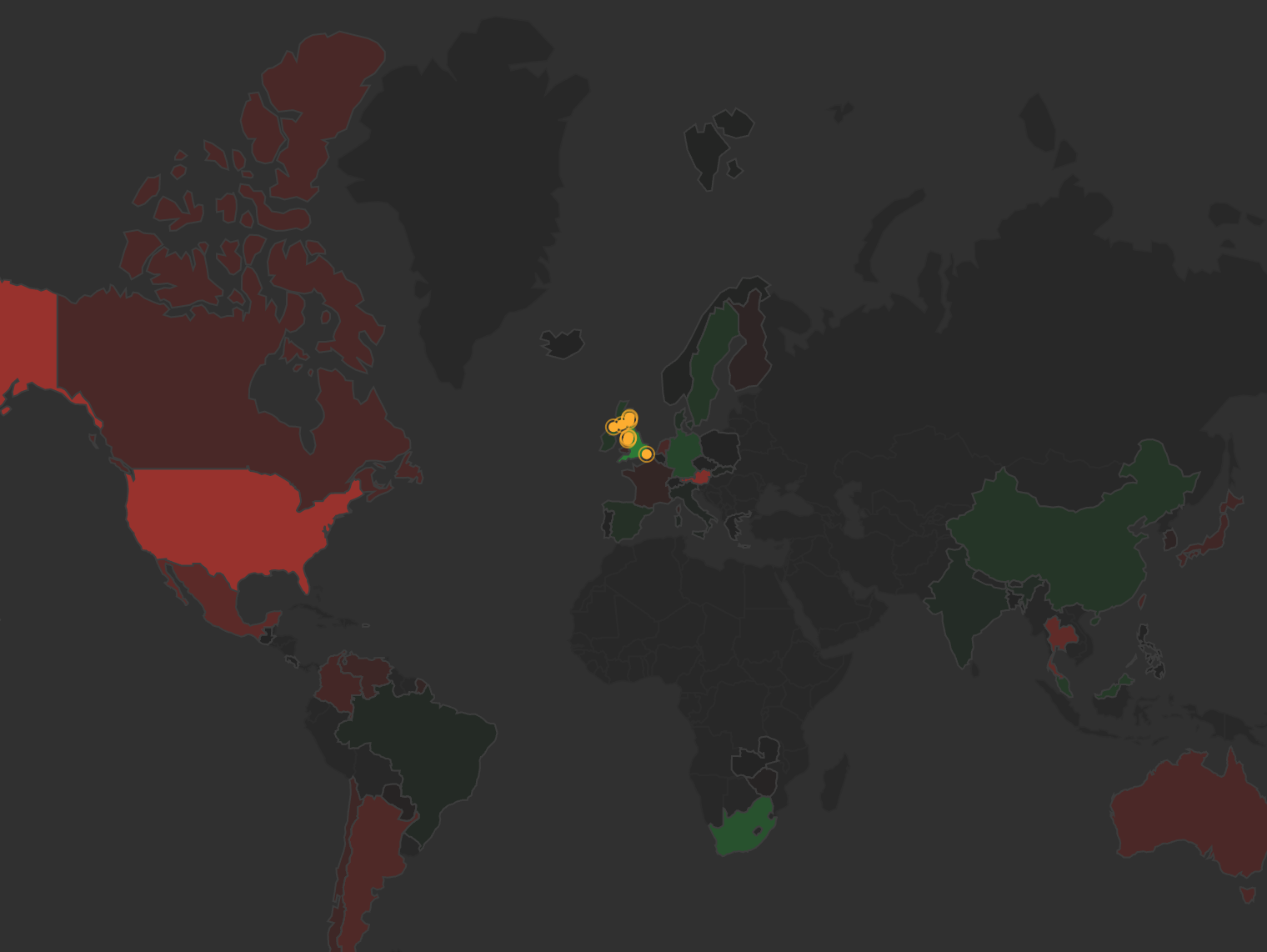
Visualizing how players from different countries perform around the world.
A Short-Lived Celebration
2022-10-16


Keeping tabs on 175 Korn Ferry Tour graduates.
When it Rains, it Pours
2023-01-14
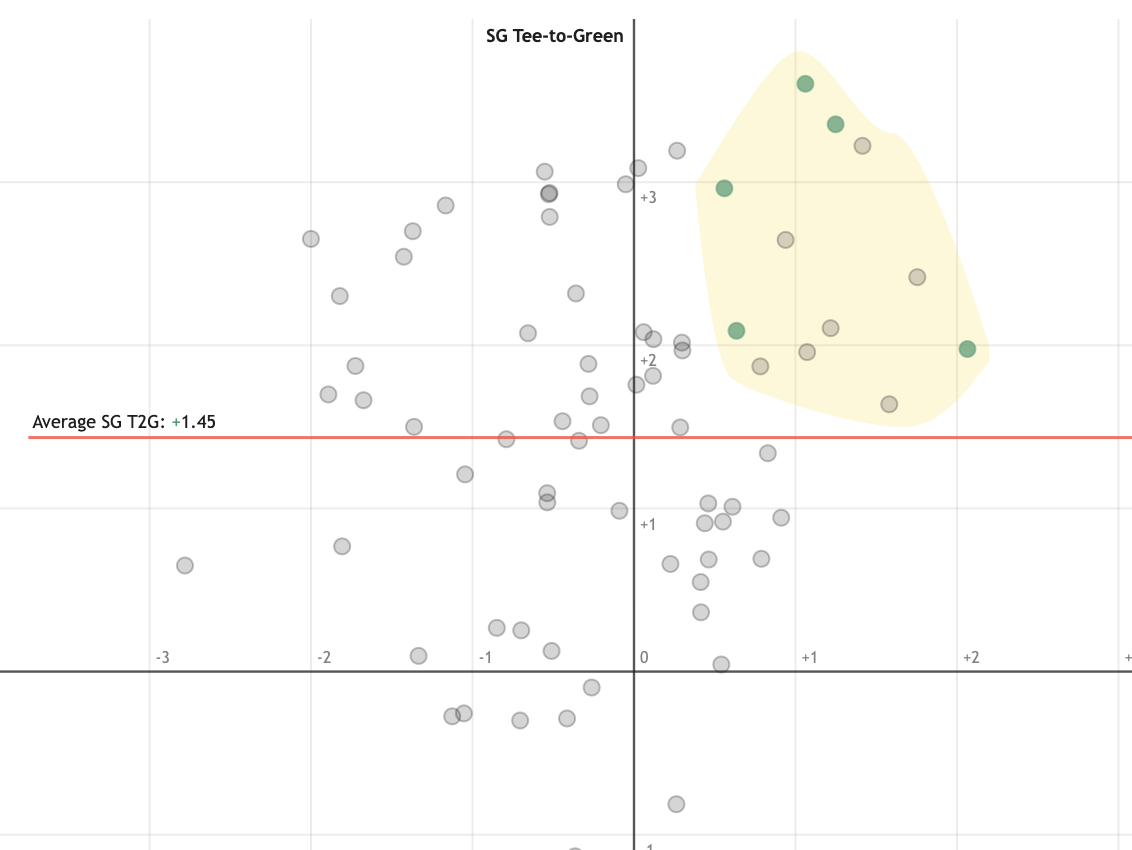

Exploring the mysterious link between Collin Morikawa's putting and tee-to-green performance.
Does Augusta Play Favourites?
2023-04-01

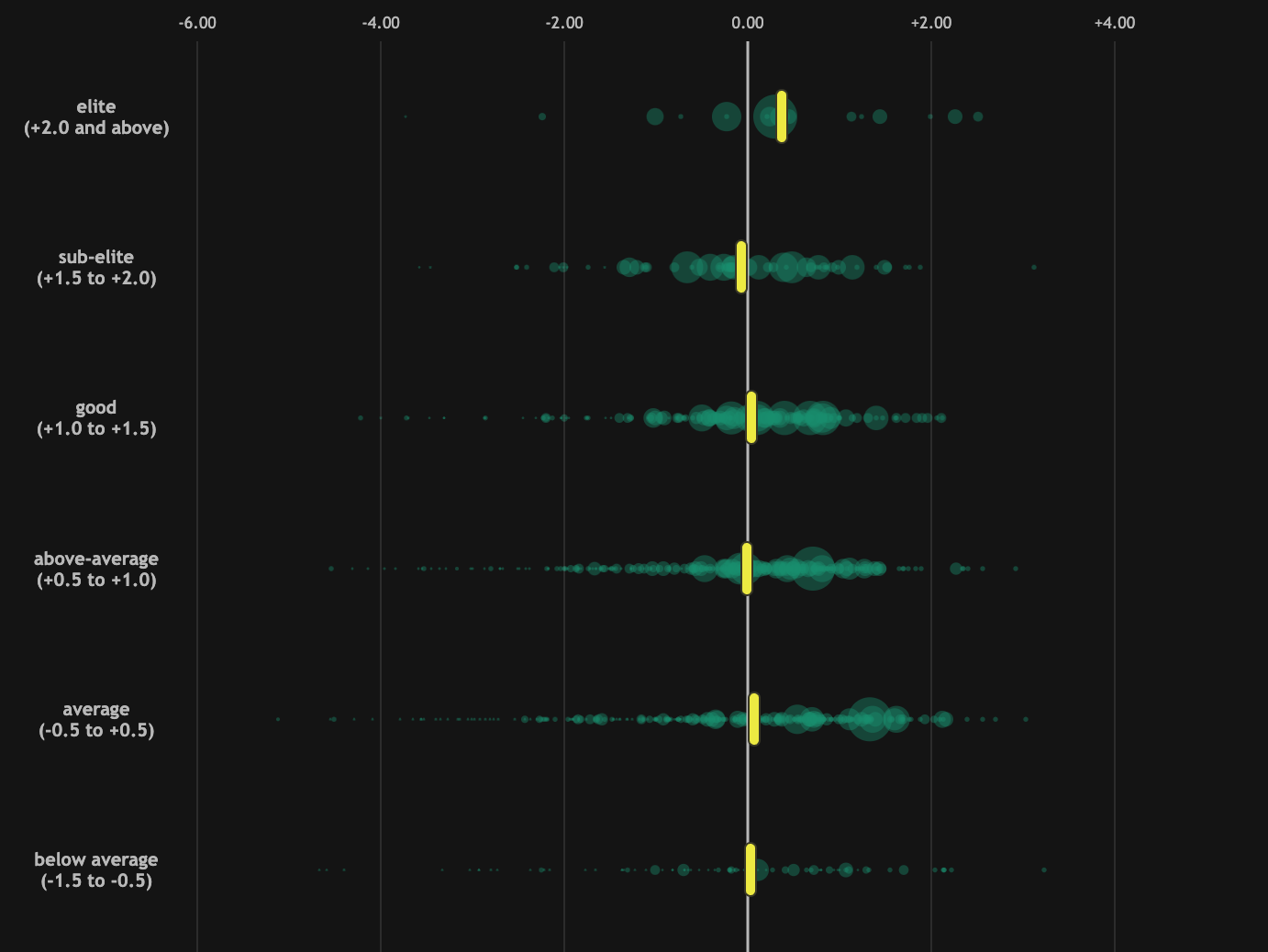
Using data visualization to test a few Augusta National narratives.
The Skill Dist'n of Major Champions
2023-05-15
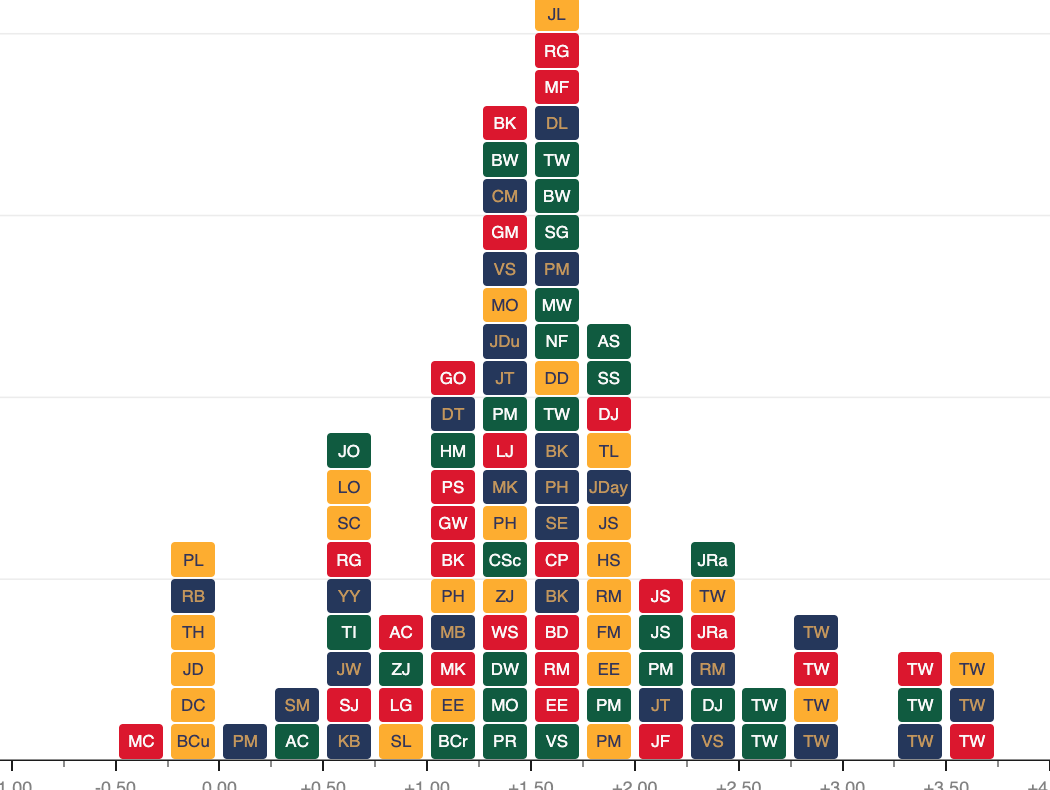
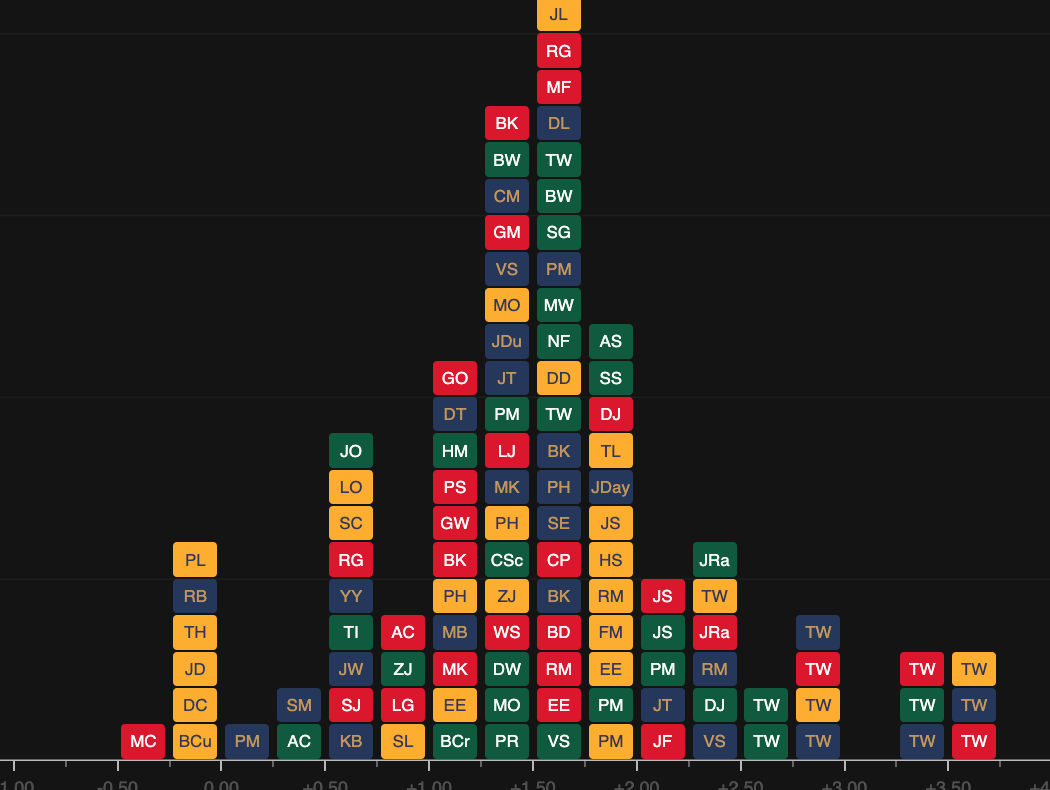
Plotting the skill distribution of the past 112 Major Champions.
The 10th at Riviera
2024-02-14
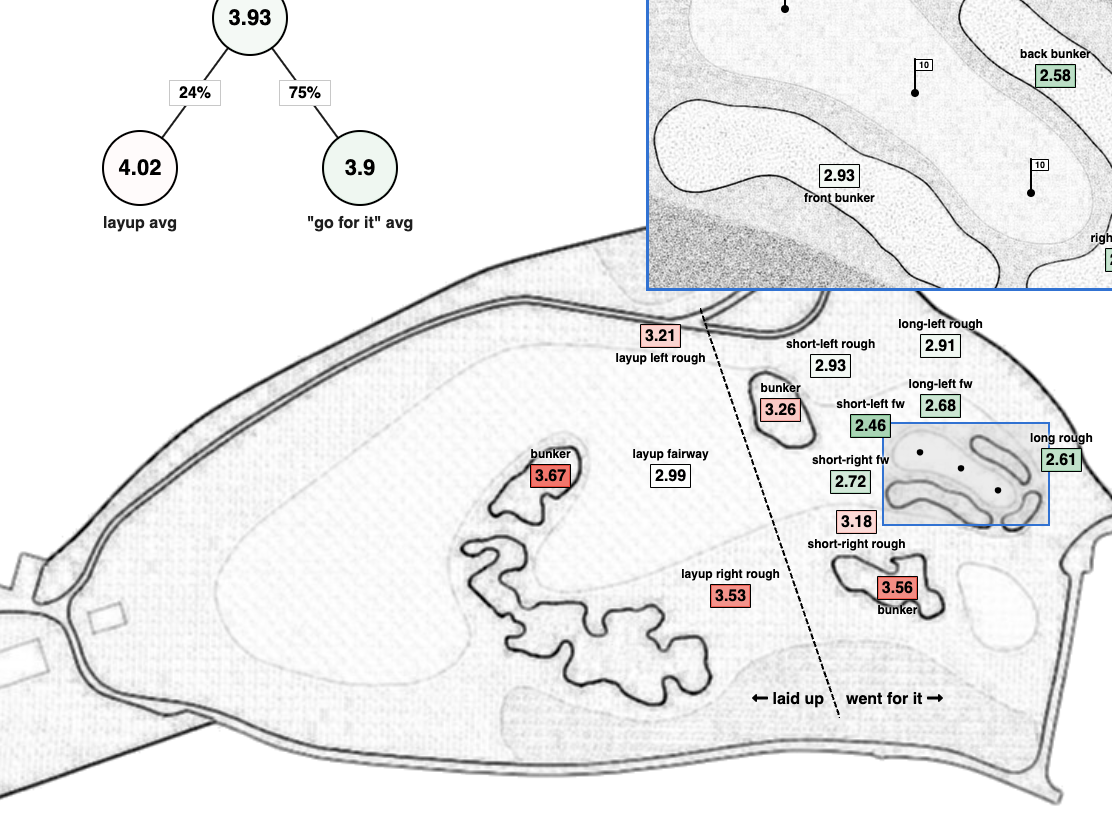

Plotting the average strokes to hole out from various locations.